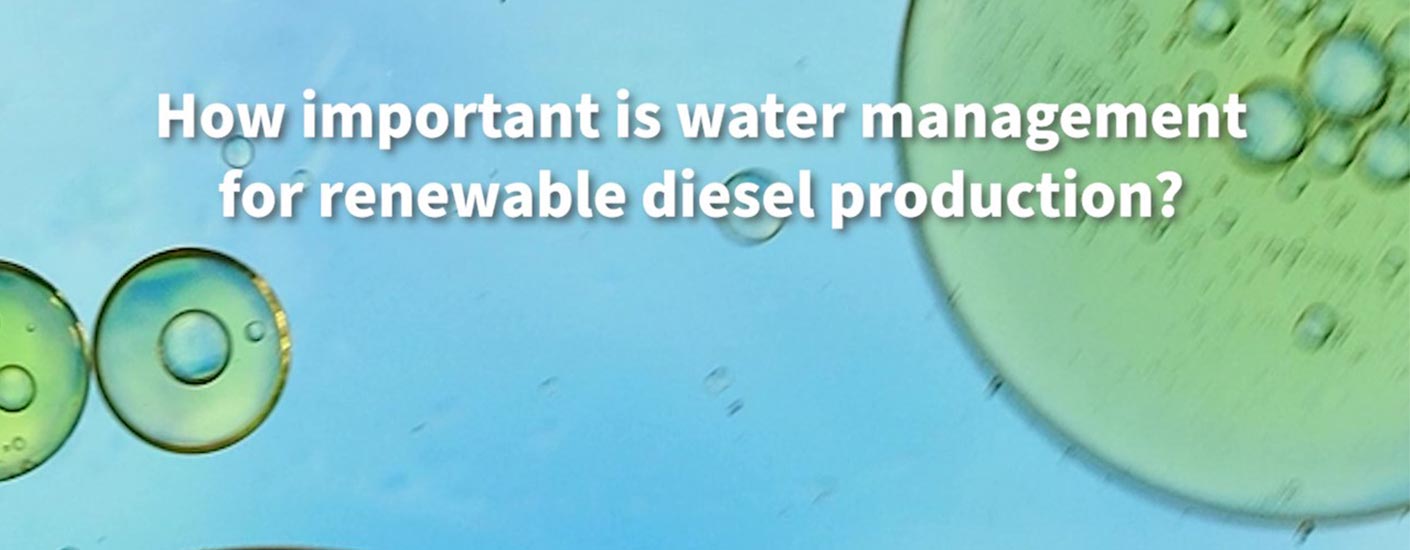Wastewater treatment poses a challenge for renewable diesel production.
The wastewater from renewable diesel production is anywhere from 10 to 100 times stronger in organic contaminants than typical petroleum refinery wastewater. This is often expressed using terms such as Chemical Oxygen Demand (COD). Renewable diesel wastewater is typically lower in flow rate as well.
This wastewater requires a level of treatment intensity well beyond what is typically required at modern oil refineries.
In practical terms, the higher concentrations and lower flow rates suggest that a wastewater treatment plant serving a 500,000 barrel per day (bpd) oil refinery may only have the required treatment capacity for a 40,000 to 50,000 bpd renewable diesel refinery.
The reason for this? Wastewater from renewable diesel refining typically has very high fats and oil content, typically between 7,000 and 50,000 mg/L, and requires a different pre-treatment than typical oil refinery wastewater does. This limits the effectiveness of existing wastewater treatment units. Plant hydraulics, including piping and pumping, may also need to be altered to properly convey lower wastewater flow rates.
Renewable diesel is undergoing an industrial scale renaissance, and we’re helping to make it happen.
The energy transition has triggered massive demand for many forms of renewable energy. Renewable diesel is a specialized subset of a larger group of ‘biofuels’, or renewable fuels.

Biofuels are produced from a wide range of feedstocks such as vegetable oils from soybean, cottonseed, coconut, nuts, canola, and sunflower; used frying oil; algae; and even animal fats such as waste tallow. Refined forms of the primary biofuel products include biodiesel and renewable diesel.
To produce diesel/biodiesel fuel blend (ASTM D6751 B100 fuel), feedstocks undergo a process called transesterification which converts natural fatty acids or triglycerides into mono-alkyl esters and glycerin. Typically, around 100 kg of fatty feedstock plus around 10 kg of alcohol produces 100 kg of biodiesel product that can be blended with fossil diesel.
Biodiesel is typically sold as a blend with fossil-derived fuel, often at around 20 percent biodiesel to 80 percent fossil-fuel diesel.
The glycerin by-product from biofuel processing is a valuable input for numerous chemical products, including soap, pharmaceuticals, and explosives. However, 100 percent of this glycerin by-product isn’t always recovered. A percentage of this by-product will remain. When mixed with other organic residues, this results in wastewater that is high in COD.
Renewable diesel is produced by hydrotreating a renewable feedstock, using hydrogen, which can be produced using renewable electricity, further improving low-carbon credentials. This process yields a fuel product chemically identical to fossil-fuel-derived diesel. When manufactured in compliance with ASTM D975 fuel standards, renewable diesel is a sustainable, clean-burning fuel that can be used in existing diesel engines without modification.
Renewable diesel has enormous potential as a transport fuel and potentially also as a renewable hydrocarbon feedstock for some parts of the petrochemicals industry.







